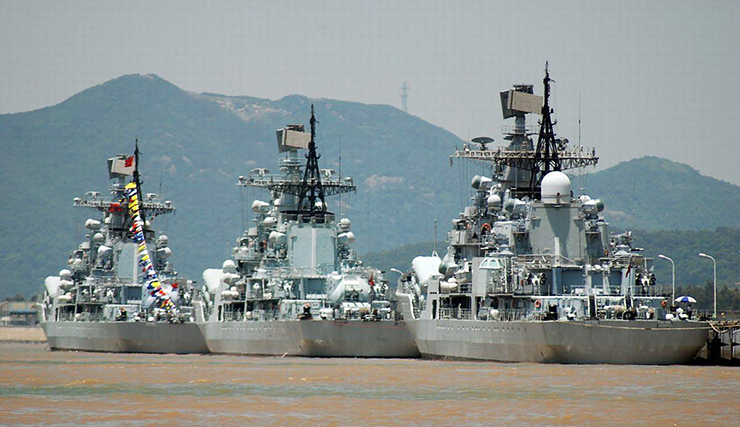The latest developments in the South China Sea indicate that the situation there continues to develop in an increasingly dangerous direction for regional and international security. The American-Chinese rivalry for domination in this region of the world is taking on larger and more dangerous forms.
Americans demonstrated their power first: an American aircraft carrier, the Carl Vinson, was on an official visit to the Vietnamese port of Cam Ranh, the location of the largest base of the US fleet during the years of American aggression in Indochina. This ship’s arrival to Cam Ranh was accompanied by a powerful propaganda campaign, the message of which was that now the USA, with all its might, is demonstrating its return to the region, ready to defend the countries of Southeast Asia from Chinese expansion.
To enhance the effect of the restored military presence, the Americans next sent the USS Mustin destroyer on a so-called “expeditionary voyage,” which, along a path well-tread by other American ships, was to pass along the newly constructed artificial islands and zones marked by the Chinese as “military navigation forbidden.” These islands appeared on the site of small reefs, and the Americans do not recognize the legitimacy of their transformation into unsinkable Chinese aircraft carriers, with runways, centers of radio reconnaissance and anti-aircraft defense.
With regular visits of their warships, the Americans have been demonstrating their positions for several years and are constantly provoking the Chinese military leadership to retaliate; they are showing the Southeast Asian countries that they are confident that the Chinese will not risk attacking their warships.
When USS Mustin set off on its “expeditionary flight,” it seemed that everything would be the same as usual. Indeed, in response to the American destroyer’s raid, the Chinese authorities urged the US to stop provocative actions that violate sovereignty and threaten China’s security. This was stated by an official representative of the Ministry of Foreign Affairs of China, Hua Chuning. She also pointed out that “China will continue to take the necessary measures to protect its sovereignty and security, as well as to protect peace and stability in the South China Sea.”
It seems that no one in Washington’s political circles took the usual protest by Chinese authorities seriously.
But following events have shown that China is losing patience to continue repeating this cycle. In response to all these actions by the American fleet in the South China Sea, and approximately in those areas where the American ships recently patrolled, the Chinese have sent a fleet composed of dozens of warships, led by its flagship, the aircraft carrier Liaoning. The movement of the Chinese fleet was recorded by space satellites. From their data, it seems that at least 40 ships and submarines from the Chinese fleet, as well as the aircraft carrier, Liaoning, are advancing south from Hainan Island in the South China Sea.
Regional analysts immediately called these unexpected maneuvers a convincing demonstration of the strength of the rapidly developing Chinese fleet, although the Chinese defined their actions as a “routine annual event.”
There may be different accounts of the event, from the official Chinese (as a “routine event”), to the majority of regional military analysts who report that these are exceptional naval exercises of massive importance and scale. But what is becoming obvious is that the conflict in the South China Sea and the American-Chinese rivalry are becoming more and more dangerous. Obviously, the two opposing sides are not going to yield to each other, and in the light of the trade war that is unfolding today between the US and China, the danger of a military clash between the two modern superpowers is becoming increasingly probable. And so far, one cannot see any tools to stop this process.
Dmitry Mosyakov is a professor, Doctor of Historical Sciences, Head of the Center for the Study of Southeast Asia, Australia and Oceania, exclusively for the Internet magazine New Eastern Outlook.

